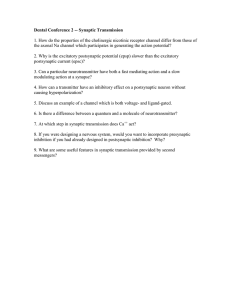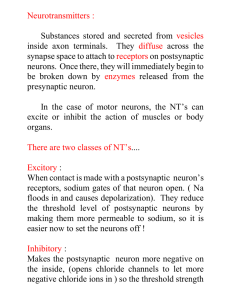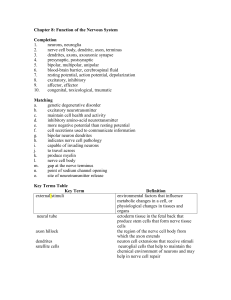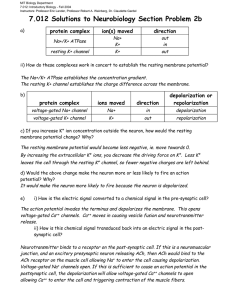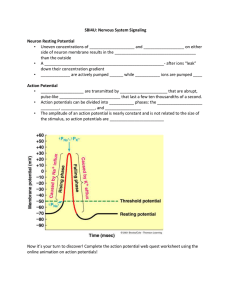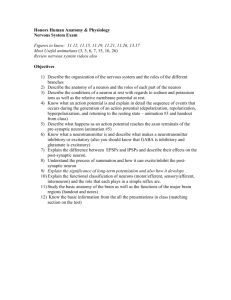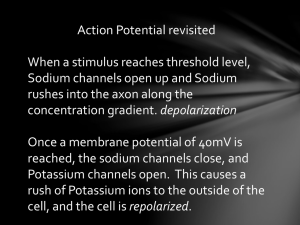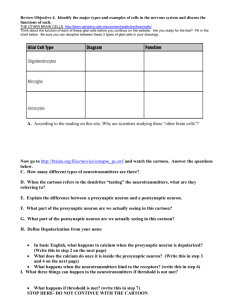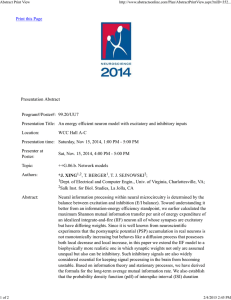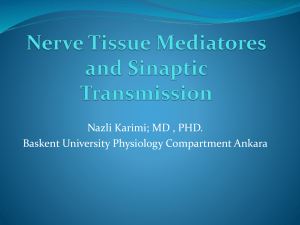BIO 330 Cell Biology Lecture Outline Spring 2011 Chapter 13
advertisement
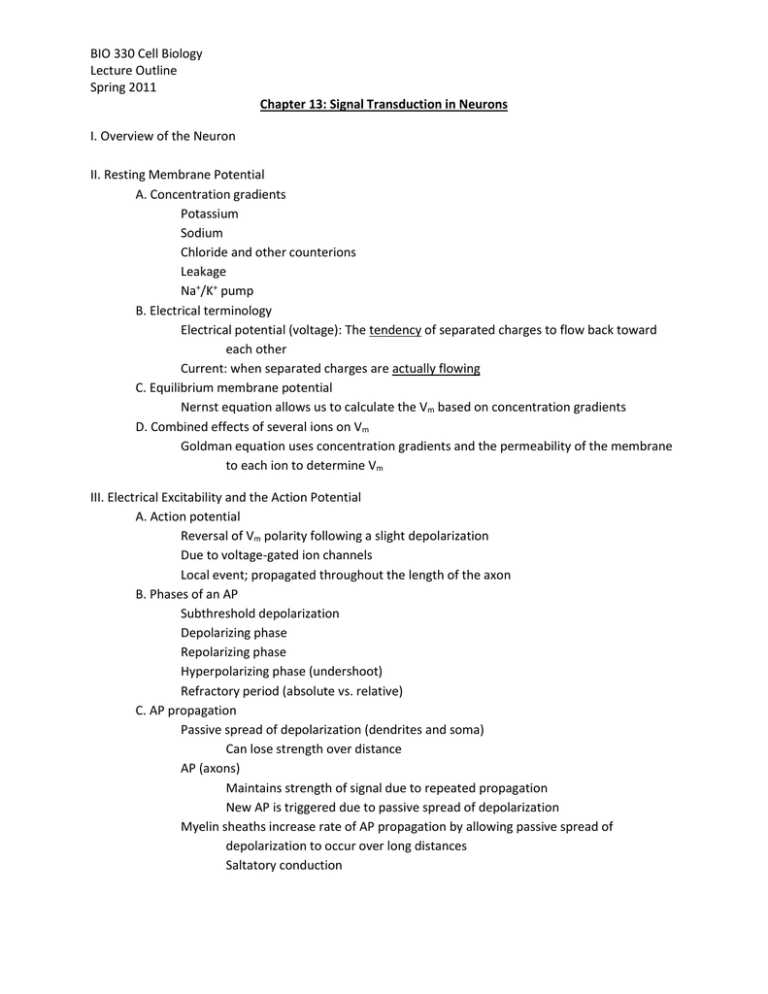
BIO 330 Cell Biology Lecture Outline Spring 2011 Chapter 13: Signal Transduction in Neurons I. Overview of the Neuron II. Resting Membrane Potential A. Concentration gradients Potassium Sodium Chloride and other counterions Leakage Na+/K+ pump B. Electrical terminology Electrical potential (voltage): The tendency of separated charges to flow back toward each other Current: when separated charges are actually flowing C. Equilibrium membrane potential Nernst equation allows us to calculate the Vm based on concentration gradients D. Combined effects of several ions on Vm Goldman equation uses concentration gradients and the permeability of the membrane to each ion to determine Vm III. Electrical Excitability and the Action Potential A. Action potential Reversal of Vm polarity following a slight depolarization Due to voltage-gated ion channels Local event; propagated throughout the length of the axon B. Phases of an AP Subthreshold depolarization Depolarizing phase Repolarizing phase Hyperpolarizing phase (undershoot) Refractory period (absolute vs. relative) C. AP propagation Passive spread of depolarization (dendrites and soma) Can lose strength over distance AP (axons) Maintains strength of signal due to repeated propagation New AP is triggered due to passive spread of depolarization Myelin sheaths increase rate of AP propagation by allowing passive spread of depolarization to occur over long distances Saltatory conduction BIO 330 Cell Biology Lecture Outline Spring 2011 IV. Synaptic Transmission A. Synapse terminology Presynaptic neuron Postsynaptic neuron Synpase Synaptic cleft B. Electrical synapses Gap junctions C. Chemical synapses 1. Electrical signal must be converted to chemical signal to cross synaptic cleft, then reconverted into a new electrical signal in the postsynaptic cell 2. Neurotransmitters Excitatory vs. inhibitory Criteria Elicit appropriate response in postsynaptic cell Occur naturally in presynaptic cell Released at appropriate time following stimulus of presynaptic neuron Classes Acetylcholine Catecholamines Amino acids & derivatives Neuropeptides Release of neurotransmitters Trigger: high intracellular calcium (voltage-gated Ca2+ channels) Neurosecretory vesicles dock & fuse as described last week! Some neurotoxins work by preventing neurotransmitter release 3. Neurotransmitter receptors on postsynaptic neurons ACh receptors Nicotinic vs. muscarinic nAchR is excitatory by opening sodium channels GABA receptors Inhibitory by opening chloride channels 4. Neurotransmitter inactivation Neurotransmitter reuptake Degradation Acetylcholinesterase V. Integration of Nerve Signals A. Postsynaptic potentials (PSP) Excitatory (EPSP) vs. inhibitory (IPSP) B. Summation Temporal vs. spatial
